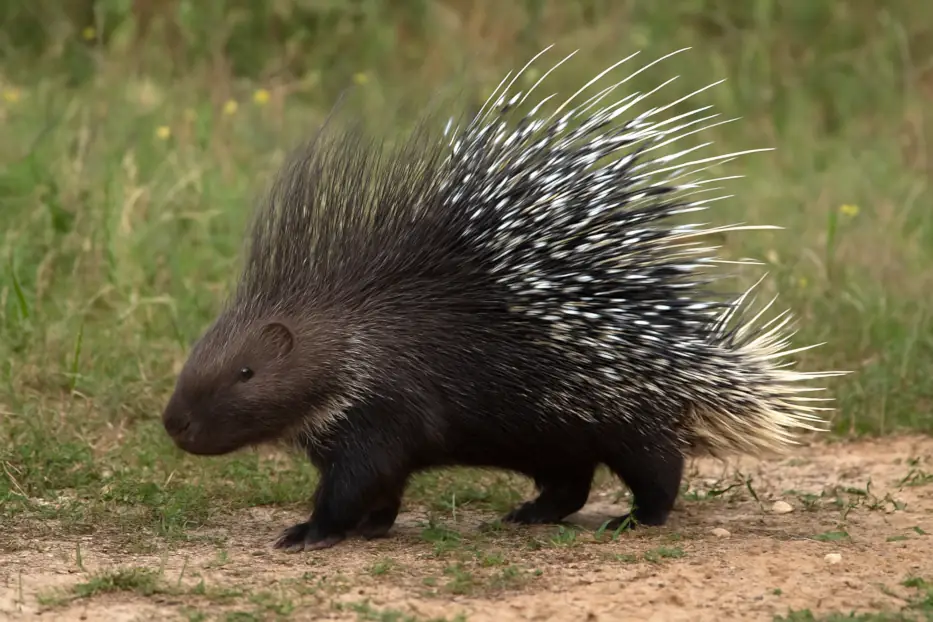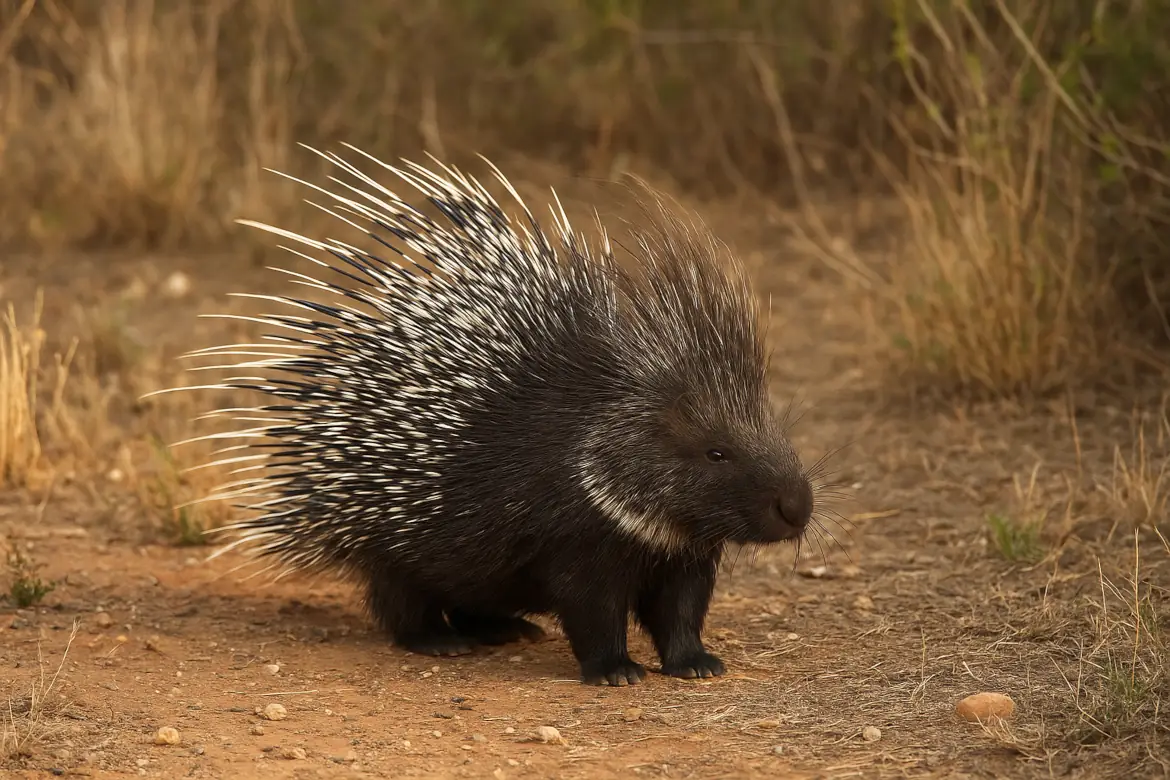The crested porcupine in Sicily is Europe’s only wild porcupine species, thriving in the varied landscapes of this Mediterranean island.
This large rodent lives exclusively in Italy, with stable populations on the mainland and in Sicily. Nowhere else in Europe does the crested porcupine occur in the wild, making every sighting here especially unique.
Table of Contents
A Unique Species in the European Wild
The crested porcupine in Sicily is native to Africa, but it has a long and fascinating history on the Italian Peninsula. It’s the second-largest rodent in Europe, following only the beaver, and the third-largest among all modern rodents worldwide, after the beaver and the much larger South American capybara.
Adult crested porcupines can weigh up to 27 kilograms (almost 60 pounds), making them an impressive sight. Their most striking feature is their quills—long, black-and-white spines that can reach up to 35 centimeters (14 inches). These quills aren’t shot like arrows, as some myths suggest, but they do detach easily and can seriously injure a predator.
Fossil Evidence and Ancient Origins
This isn’t a recent arrival. Fossils of the crested porcupine have been found in Italy dating back to the late Pleistocene—over 30,000 years ago. Still, a significant question remains: did the species go extinct in Europe and later get reintroduced by the Romans, or did it survive continuously into modern times? Either way, it holds a long-standing place in Italy’s natural history.
Where the Crested Porcupine in Sicily Lives
The crested porcupine now lives throughout much of central and southern Italy, including the large Mediterranean island of Sicily. It prefers hilly, rocky terrain, scrublands, and forest edges, but it’s also adaptable and can be found near agricultural areas.
Porcupines are mostly nocturnal and secretive, so they’re rarely seen. But if you walk through the countryside, you might find shed quills or gnawed bones—evidence of their calcium-hungry diet.
Local guides sometimes track signs of the crested porcupine in Sicily to study its nocturnal habits. They’re solitary or found in small family groups, coming out at night to forage on roots, bulbs, fruits, and bark.

Protected but Still Hunted in Some Regions
Despite being hunted in some parts of Africa and the Middle East for food, the crested porcupine is listed as Least Concern by the IUCN Red List, thanks to its wide distribution and stable population. In Italy, however, it is protected by law, and hunting or harming these animals is illegal.
Farmers occasionally report conflicts with the crested porcupine in Sicily, but conservation efforts focus on reducing misunderstandings about its behavior. Conservation groups in Italy continue to work on raising awareness about the porcupine’s role in local ecosystems.
A Living Metaphor in Philosophy
The crested porcupine has even made its mark in philosophy. The 19th-century German philosopher Arthur Schopenhauer used porcupines to illustrate what he called the “porcupine dilemma.” In cold weather, porcupines huddle together for warmth but must stay far enough apart not to hurt each other with their quills.
Schopenhauer used this as a metaphor for human relationships—we seek closeness, but too much can cause pain. It’s a powerful image that makes this unique animal even more symbolic.
A Rare and Remarkable Creature
The crested porcupine in Europe is a rare sight, but it plays an important role in the wildlife of Italy and Sicily. It’s a survivor of the Ice Age, a quiet forager under the moonlight, and a living symbol of balance, self-protection, and resilience.
With its striking appearance and deep roots in both nature and culture, the crested porcupine reminds us that Europe’s biodiversity is full of surprises.
If you visit Sicily, local guides sometimes offer tours to help you spot the crested porcupine in its natural habitat, making it a memorable wildlife experience.

